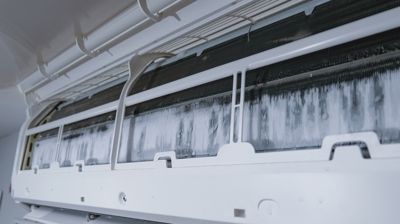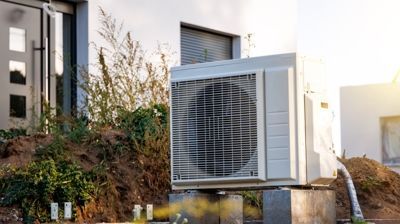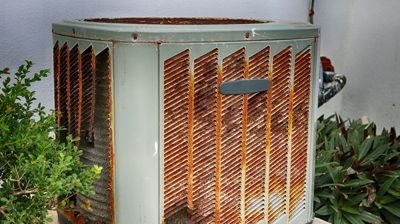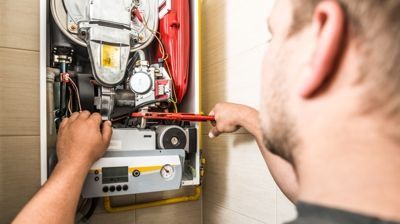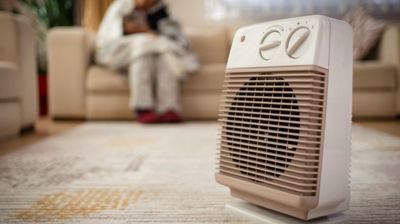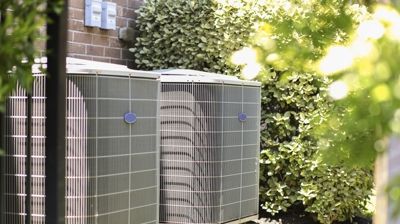Air Max HVAC Blog & Resource Library

April 4, 2024 | Air Max Heating, Air Conditioning and Refrigeration
Understanding Indoor Air Pollutants
Sources of Indoor Air Pollution
When we think of air pollution, images of smoggy cityscapes often come to mind. However, the air within the walls of our homes can be just as contaminated, if not more so. Common indoor air pollutants include tobacco smoke, which can linger long after the smoke has cleared, introducing a host of harmful chemicals into the environment. Radon, a naturally occurring radioactive gas, can seep into homes from the ground and is the second leading cause of lung cancer. Volatile Organic Compounds (VOCs), found in paints, cleaning supplies, and building materials, can off-gas into our living spaces, causing an array of health issues. Particulate matter, tiny particles or droplets in the air, can come from a variety of sources, including burning candles and cooking. These pollutants can accumulate to levels that pose health and comfort issues if not properly managed.
Health Effects of Poor Indoor Air Quality
It's not just discomfort we're talking about when it comes to poor indoor air quality; there are tangible health effects that can stem from prolonged exposure to indoor pollutants. Allergies can be exacerbated by the presence of dust mites and pet dander, while asthma sufferers may find their symptoms worsening due to airborne irritants. But it doesn't stop there—headaches, fatigue, and even long-term respiratory diseases can be linked to the quality of the air we breathe indoors. For those with compromised immune systems or pre-existing health conditions, the stakes are even higher. Understanding these risks is the first step in creating a healthier home environment.
Enhancing Ventilation and Airflow
Natural Ventilation Strategies
One of the simplest and most cost-effective ways to improve indoor air quality is by enhancing natural ventilation. This can be as straightforward as opening windows to create a cross-breeze, allowing fresh air to circulate and dilute indoor pollutants. However, it's important to consider outdoor air quality and pollen counts before throwing those windows wide open, as these factors can impact the effectiveness of natural ventilation. Other strategies include using window fans strategically placed to push polluted air out and pull fresh air in, and ensuring that vents and chimneys are unobstructed to promote good airflow throughout the home.
Mechanical Ventilation Solutions
When natural ventilation isn't enough, mechanical systems can step in to help maintain a healthy indoor environment. Modern HVAC systems equipped with HEPA filters are capable of trapping particles as small as 0.3 microns, effectively reducing the amount of particulate matter circulating in the air. Energy Recovery Ventilators (ERVs) and Heat Recovery Ventilators (HRVs) are also excellent options, particularly in climates where opening windows year-round isn't practical. These systems not only improve air quality but also conserve energy by recovering heat or coolness from the outgoing air. It's a win-win for both your health and your utility bills.
Controlling Humidity and Moisture
Importance of Maintaining Optimal Humidity Levels
Humidity plays a crucial role in indoor air quality. Too much moisture in the air can create a breeding ground for mold, mildew, and dust mites, while air that's too dry can exacerbate respiratory conditions and cause irritation in mucous membranes. The ideal indoor humidity level is between 30-50%, a range that helps prevent the growth of allergens without causing discomfort. Maintaining this balance is key to a healthy home environment, and it can be monitored with a simple hygrometer. By keeping an eye on humidity levels, homeowners can take proactive steps to address any issues before they become problematic.
Dehumidifiers and Humidifiers
In areas prone to dampness, such as basements, dehumidifiers can be an invaluable tool in maintaining the right level of humidity. Conversely, in arid climates or during dry winters, humidifiers can add necessary moisture to the air. These appliances come in various sizes and capacities, making it easy to find one that's suited to the specific needs of your space. It's important to regularly clean and maintain these devices, as they can become sources of pollution themselves if not properly cared for. By using dehumidifiers and humidifiers wisely, homeowners can create a more comfortable and healthful living environment.
Regular Cleaning and Maintenance
Reducing Dust and Allergens
Regular cleaning is a cornerstone of maintaining good indoor air quality. Dust mites, pet dander, and other allergens can accumulate on surfaces and in fabrics, triggering allergic reactions and respiratory issues. Frequent vacuuming with a HEPA filter-equipped cleaner can significantly reduce the presence of these irritants. Additionally, keeping clutter to a minimum can prevent dust from gathering and make cleaning more effective. Washing bedding and curtains regularly, as well as opting for easy-to-clean surfaces and furnishings, can also help reduce the accumulation of allergens in the home.
Maintaining Clean Air Ducts and Filters
The unseen parts of your home's heating and cooling system play a pivotal role in indoor air quality. Over time, air ducts can collect dust and debris, which is then circulated throughout the home every time the system kicks on. Regular cleaning or replacement of air filters is essential to prevent this. Similarly, periodic inspection and cleaning of ductwork can ensure that your HVAC system is contributing to cleaner air, not detracting from it. Homeowners should consider professional duct cleaning services, especially after renovations or if there are pets in the home, to maintain the optimal functioning of their HVAC system.
Incorporating Air-Purifying Plants and Technology
Benefits of Houseplants for Air Quality
NASA's Clean Air Study brought to light the natural air-purifying abilities of certain houseplants, and since then, greenery has become a popular addition to the health-conscious homeowner's arsenal against indoor pollutants. Plants like the spider plant, snake plant, and peace lily have been shown to absorb toxins like benzene, formaldehyde, and trichloroethylene. While they are not a replacement for other air quality improvement measures, incorporating these plants into your home decor can provide a natural boost to your air purification efforts, along with the added benefits of increased oxygen levels and enhanced mood.
Advanced Air Purification Systems
For those looking to take their indoor air quality to the next level, advanced air purification systems offer a high-tech solution. These systems can include activated carbon filters, which are highly effective at removing VOCs and odors from the air. UV germicidal irradiation uses ultraviolet light to kill bacteria and viruses, providing an additional layer of protection against airborne pathogens. When combined with other measures like proper ventilation and regular cleaning, these systems can greatly improve the overall quality of indoor air, making for a healthier and more comfortable home environment.
Contact Air Max to Improve Your Indoor Air Quality
At Air Max Heating, Air Conditioning, and Refrigeration, we understand the importance of a healthy home environment. If you're a homeowner or renter looking to enhance your indoor air quality, our team of experts is here to help. From state-of-the-art HVAC systems to professional maintenance services, we offer indoor air quality solutions tailored to your specific needs. Don't let indoor air pollutants compromise your health and comfort.
Contact us online or call (320) 252-5602 today to learn more about our services and how we can assist you in achieving the perfect indoor atmosphere.
